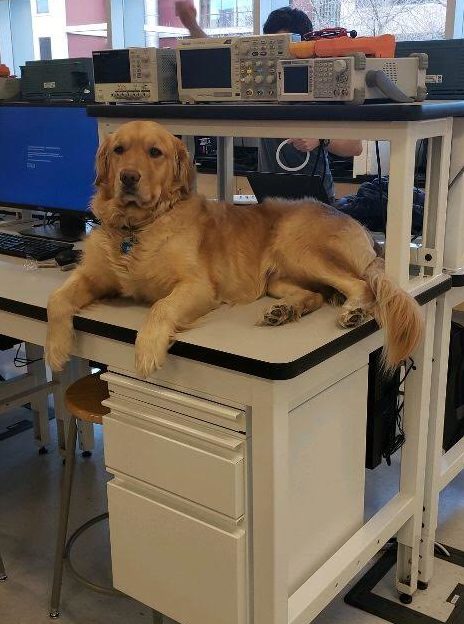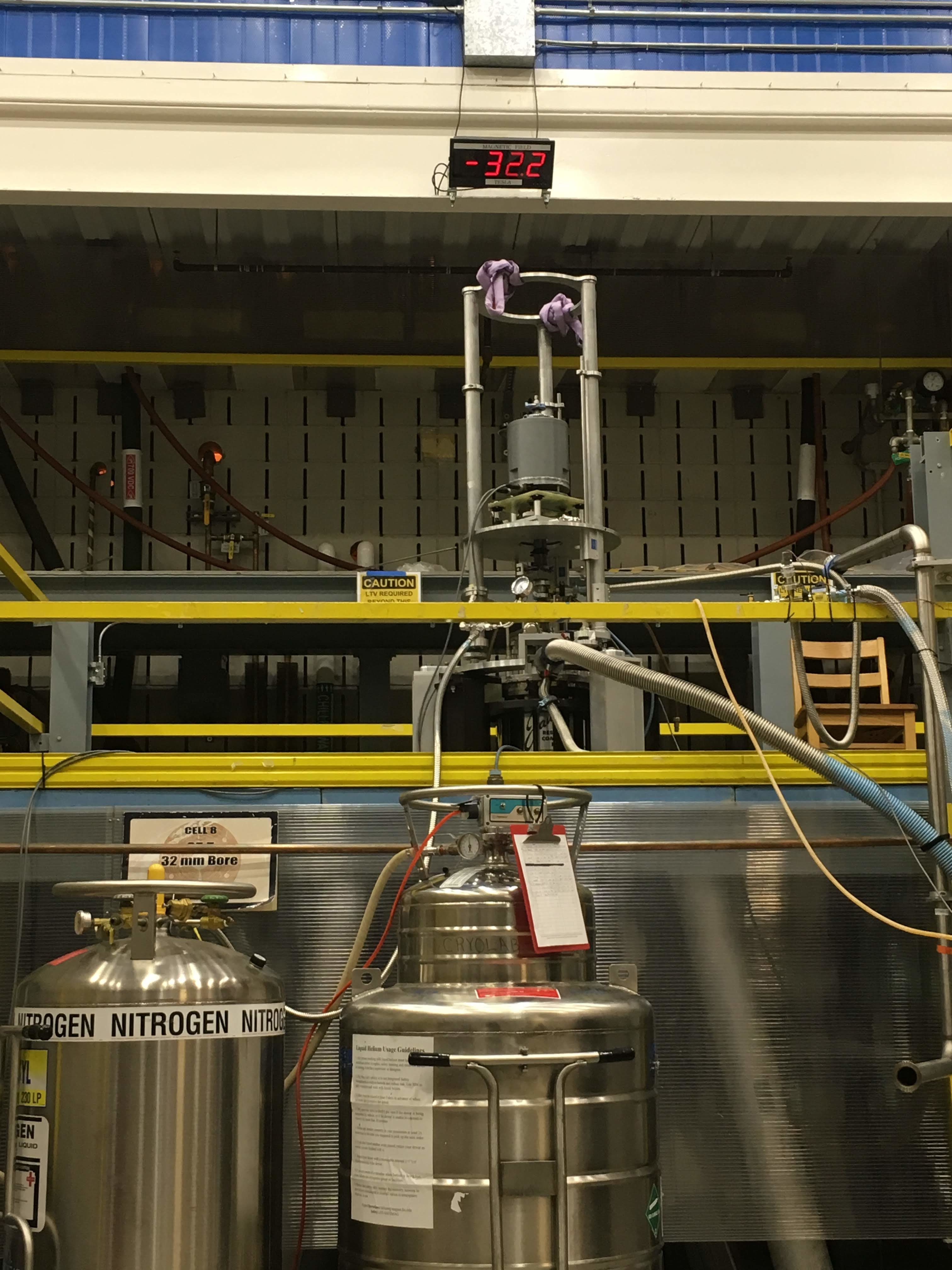News
Eley Wins a Cottrell Scholars Award
Research Corporation for Science Advancement has named a group of 24 early career scholars in chemistry, physics and astronomy as recipients of its 2022 Cottrell Scholars Award. Each awardee receives $100,000.
“These exceptional teacher-scholars are chosen not just for their research and educational programs but for their potential to become academic leaders at their institutions and beyond,” said RCSA President & CEO Daniel Linzer.
Recipients are chosen through a rigorous peer-review process.
Eley Wins Joseph A. Johnson Award
“The American Institute of Physics and the National Society of Black Physicists are pleased to announce that physicist Serena Eley is the recipient of the 2021 Joseph A. Johnson III Award for Excellence. The award, now in its second year, is given by AIP and NSBP in recognition of an early career scientist who exemplifies the values of Joseph A. Johnson, a renowned experimental physicist, impactful mentor, and founder of NSBP.”
Work Featured on Cover of Journal of Applied Physics (August 2021)
 Our recently published article, Challenges and Transformative Opportunities in Superconductor Vortex Physics, was chosen as an Editor’s Pick as well as featured in a Scilight and on the cover of the Journal of Applied Physics.
Our recently published article, Challenges and Transformative Opportunities in Superconductor Vortex Physics, was chosen as an Editor’s Pick as well as featured in a Scilight and on the cover of the Journal of Applied Physics.
Eley group featured on 1400degrees platform
 Click here for interviews featured on 1400degrees, built by the Heising-Simons Foundation to “create a community space for women studying and working in the fields of physics and astronomy.”
Click here for interviews featured on 1400degrees, built by the Heising-Simons Foundation to “create a community space for women studying and working in the fields of physics and astronomy.”
Congratulations to Josh Moler and Matt Barbattini for winning 3rd place in the MURF poster competition
Congratulations to Joshua Moler and Matthew Barbattini on their 3rd place award in the Mines Undergraduate Research Fellowship poster presentation competition.
Eley wins NSF Early Career Award
Eley joins Research Advisory Board of newly announced IBM HBCU Quantum Center
September 17, 2020 Announcement of new IBM HBCU Quantum Center
Led by Prof. Thomas Searles (Howard University), the IBM HBCU Quantum Center includes:
IBM-HBCU Quantum Center Members
- Albany State University
- Clark Atlanta University
- Coppin State University
- Hampton University
- Howard University
- Morehouse College
- Morgan State University
- North Carolina Agricultural and Technical State University
- Southern University
- Texas Southern University
- University of the Virgin Islands
- Virginia Union University
- Xavier University of Louisiana
The program’s research advisory board is composed of industry and academic leaders in the quantum computing and physics fields. Notably, the board features Black talent in the field at various levels of their careers.
IBM-HBCU Quantum Center Research Advisory Board
- Abe Asfaw, Global Lead of Quantum Education & Open Science, IBM Quantum
- Charles Brown, Postdoctoral Researcher, UC Berkeley
- Reginald DesRosches, Howard Hughes Provost, Rice University
- Serena Eley, Assistant Professor, Colorado School of Mines
- Jay Gambetta, IBM Fellow and VP of Quantum Computing, IBM Quantum
- Boubacar Kanté, Associate Professor, UC Berkeley
- Donnell Walton, Director of the Corning Technology Center Silicon Valley, Corning Incorporated
- James Whitfield, Assistant Professor, Dartmouth
- Bill Wilson, Executive Director, Harvard Center of Nanoscale Systems
Collaborative Work on Nanomagnet Arrays Featured as AIP Advances Scilight: New Nanoscale Magnetic Field Method Provides Step for Quantum Computing
Collaborative work performed to study the creation of nanoscale magnetic fields using nano-magnet arrays. The study was led by K. Sapkota and T.M. Lu at Sandia National Labs. This was featured as a Scilight on the Scitation website.

Image of nano-magnet arrays from Scitation.org.
Eley, Singh, Reimanis, Toberer, and Brennecka Win NSF Major Research Instrumentation Award
Eley, the principle investigator, and associated Co-Principal Investigators were awarded a grant for their research in low temperature fields and the magnetic force microscope.
The response of materials to changes in temperature and exposure to magnetic fields can provide insight into the origins of interesting properties and access conditions under which materials become technologically useful. For example, superconductors conduct electricity very efficiently, but only when cooled to very low temperatures. Additionally, some devices only operate effectively at low temperatures: examples include next-generation computing components and detectors for national security applications. Furthermore, materials designed for motors, power generators, and certain types of computer memory inherently operate in magnetic fields, and improving their performance requires a better understanding of how magnetic fields affect their properties. To study the effects of temperature and magnetic fields on properties of newly developed materials, the Colorado School of Mines (Mines) is acquiring a variable temperature and magnetic field multi-property measurement system. This uniquely versatile, turnkey system supports research and education in multiple departments and institutions in the Front Range. Experience with this instrument and the research it enables provide students with training, experience, and skills that are highly desirable for the current and emerging job markets, including in sensing, energy, semiconductor, and computing technologies.
The instrument used consists f a cryostat (1.65-300 K) containing a 12 T magnet, a probe for electrical transport measurements in controllable applied magnetic field orientations, a cutting-edge quantum transport measurement suite for signal control and readout, and a magnetic force microscope to measure nanoscale magnetic domains. It enables research spanning a range of systems, including superconductors, magnetic materials, nanostructures, semiconductors, and ceramics. For example, it is used to reveal fascinating regions of the phase diagram in which quasiparticles emerge that can be leveraged in device applications (such as skyrmions for next-generation spintronic devices). Additionally, it supports research on vortex dynamics in superconductors, development of cryogenic solid-state coolers and devices for neuromorphic computing, the impact of nanostructure on the magnetic response of ceramic materials, and exotic quantum states such as the spin liquid and spin ice.

Image: attoDRY2100, used with variable temperature and superconducting magnet. Image and information from the attocube.com website.
Quantum Engineering Group Wins NSF Quantum Leap Challenges Institute Planning Grant - August 2019
Eley Group, along with other investigators on the project, were awarded a grant for the work in the quantum field.
“The Quantum Leap Challenge Institutes (QLCI) program is part of the Quantum Leap, one of the research Big Ideas promoted by the National Science Foundation. This award is a QLCI Conceptualization Grant, which supports activities to build capacity among teams planning for the large-scale, interdisciplinary Challenge Institute projects that aim to advance the frontiers of quantum information science and engineering. Research at these Institutes will span the focus areas of quantum computation, quantum communication, quantum simulation, and/or quantum sensing. The Institutes are expected to foster multidisciplinary approaches to specific scientific, technological, and workforce development goals in these fields.” – From NSF website
Eley Group Wins NSF Award - July 2019
Eley Group was awarded by the NSF a sum of $440,000 to study creep of vortices in superconductors and skyrmions in magnetic materials.
“The interaction of vortices with material disorder is a primary determinant of the electronic and magnetic properties of many systems. In type-II superconductors, vortices are magnetic flux lines that penetrate into the material upon exposure to magnetic fields. In chiral magnets and magnetic multilayers, vortex-like excitations called skyrmions (winding configurations of magnetic moments) can form due to antisymmetric, anisotropic exchange coupling between magnetic moments on lattice bonds. Though the origins of vortices in superconductors and skyrmions in magnetic systems are fundamentally different, striking similarities exist between their dynamics. For example, both can be modeled as particle-like excitations interacting with quench disorder, undergo disorder mediated collective interactions and exhibit glassines. Material disorder immobilizes vortices and skyrmions, whose motion can be induced by sufficiently high currents or thermal energy (thermal creep), or occur via quantum tunneling through disorder-defined energy barriers (quantum creep). Despite considerable previous research on superconductor vortex dynamics, serious gaps still exist in vortex physics. Creep rates are not predictable and no analytic expression exists that broadly captures the temperature and field dependence of creep. The objective of this work is to understand quantum creep of superconducting vortices and both quantum and thermal creep of skyrmions. To this end, the research team captures creep rates in many superconducting and magnetic materials in a range of temperatures and magnetic fields using magnetization and transport measurements. Subsequent comparisons of creep rates in disparate materials with varied disorder landscapes enables them to draw universal correlations between creep and fundamental material parameters. This research could fill a major gap in the understanding of how vortices overcome different energy barriers and enable efficacious design of defect landscapes in superconductors for many applications and magnetic devices for skyrmion-based spintronics.”
National High Magnetic Field Lab Trip - May 2019
Serena and Sarah travelled to Tallahassee, Florida to collect magnetization and transport measurements at the National High Magnetic Field Lab, the largest and highest powered magnet lab in the world.
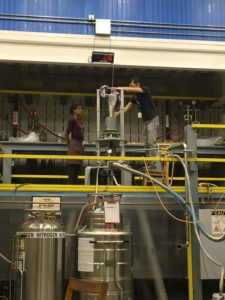
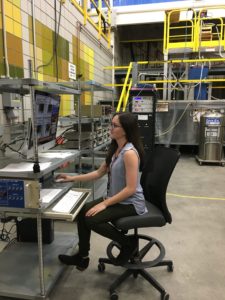
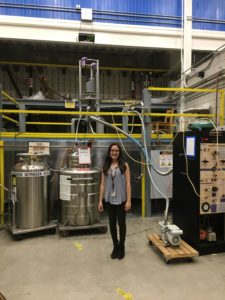
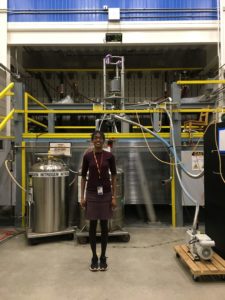
Mines Undergraduate Research Symposium Poster Award - April 2019
Congratulations to Sarah for winning 3rd place for best poster at the Mines Undergraduate Research Symposium! Click to view her poster, Vortex Dynamics in Superconductors at High Vortex Densities.
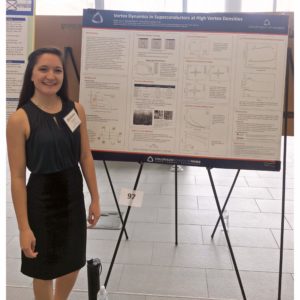
Senior Design Congratulations - April 2019
Sun, Caleb, and Jonathan presented their project results at the Mines PhysicsFest Senior Design Poster session to finish off their year of research in our group. Congratulations on a successful year and graduation from Mines!
Welcome Sarah - January 2019
We are pleased to welcome Sarah Jones to our group as an undergraduate research assistant with focus on vortex dynamics in superconductors.
Presentation at the ASC Seattle - November 2018
Serena presented on accelerated vortex dynamics across the magnetic 3D-to-2D crossover in superconducting thin films at the Applied Superconductivity Conference in Seattle, Washington. This is an important conference for large scale, electronics, and materials in the field of applied superconductivity.
Welcome Brooks, Sun, Caleb, and Jonathan - August 2018
We are pleased to welcome Brooks (Michael) Venuti as the group’s first graduate student and Sun, Caleb, and Jonathan as undergraduate senior design students.
Presentation for the Mines Society of Physics Students - November 2018
Serena presented an introduction to superconducting vortex dynamics, details on her research, and possible future opportunities in her lab at the Mines SPS Meeting.
Serena joins the faculty at Mines - August 2018
Serena will be forming the Eley Tow Temperature Physics group at Mines and teaching Analog Electronics in the Spring.
